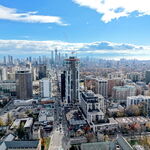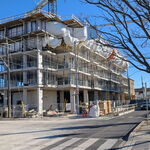reaperexpress
Senior Member
If the customs facility is at the Ontario side, it means everything happens at one station. I don't think there is anywhere CBSA operates pre clearance in the US, is there?
I think that it's simply a convention for airports. If we just built pre-clearance haphazardly at airports on both sides of the border, we could end up with some CAN-US pairs that have pre-clearance at both airports, and others with neither. That issue doesn't apply here, it makes no difference to operations whether the station is on the Canadian or the American side of the border.
I was wondering about consolidating everything into the new Niagara Falls NY station and discontinuing the current Niagara Falls ON station.
Access from Canada could be via the Michigan Central Railway Bridge, repurposed to carry a multi-use trail and/or a DMU into Niagara Falls along the abandoned ROW:
Here's a Streetview shot (pre-construction) of the Niagara Falls NY station, looking east from the Robert Moses Parkway.
And here's a sketch I made of a potential international station, from roughly the same perspective. The left platform is the US customs zone, and the right platform is the Canadian customs zone. Customs clearance itself would be under the Canadian platform, and people would come up escalators into the new structure at right (shown in the style of the existing station building).
When I drew this, I didn't realize they were actually building a second building on the left side where I have shown the fourth track. But I think the station should still be able to function with just a single American track, there isn't all that much service on that side anyway.






